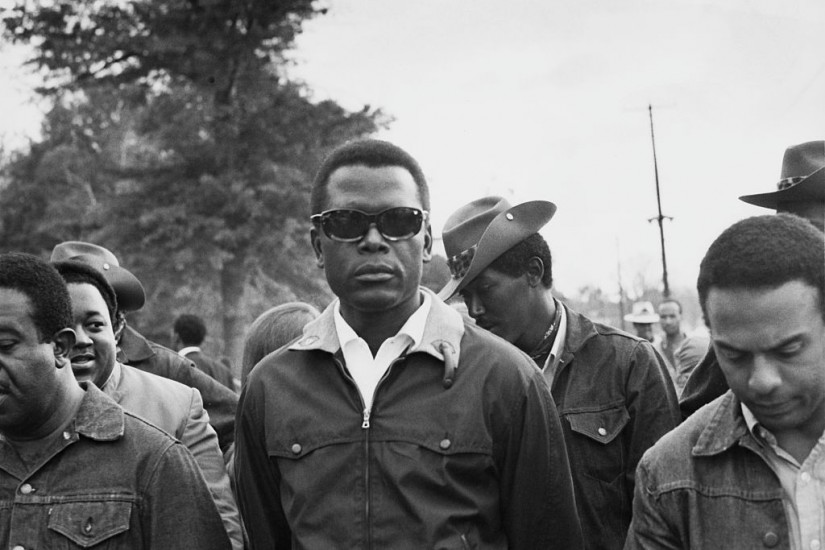While Elvis Presley and the cast of Rebel Without a Cause helped spark a new appreciation for bootcuts among the Youthquake culture, most people considered them too closely linked with the working man to wear them. For example, in 1969 nearly 200 students got suspended from their high school for wearing dark blue pants because they too closely resembled blue jeans. They were mostly something you wore while cleaning out the garage, not something you put on for cocktails.
But the revolutionaries on the front pages of newspapers helped denim become a staple in everyday people’s wardrobes. “It took Martin Luther King’s march on Washington to make them popular,” wrote Caroline A. Jones, author of Machine in the Studio: Constructing the Postwar American Artist. “It was here that civil rights activists were photographed wearing the poor sharecropper's blue denim overalls to dramatize how little had been accomplished since Reconstruction.”
While at first activists snapped on their overalls out of practicality — they were tired of mending tears from attack dogs and high-pressure hoses, and jeans could withstand the abuse — they also put them on to bring back a not-too-distant past. They used to be referred to as ‘Negro clothes’ — slave owners bought denim for their enslaved workers, partly because the material was sturdy, and partly because it helped contrast them against the linen suits and lace parasols of plantation families — and their inclusion in the civil rights movement suggested that pointed societal divide. For much of the black community, the activists’ symbolism was obvious. Separate then; separate now.
“There were some African Americans who felt that to wear jeans was disrespectful to yourself,” says James Sullivan, author of Jeans: A Cultural History of an American Icon. “For many African Americans, denim workwear represented a painful reminder of the old sharecropper system. James Brown, for one, refused to wear jeans, and for years forbade his band members from wearing them.” Sullivan points out that if you look at pictures of the sons and daughters of the sharecropper generations of the early 20th century who moved north to get away from the fields, you’ll notice that they wore suits, ties, and hats to their factory jobs, partly to create that distance.
